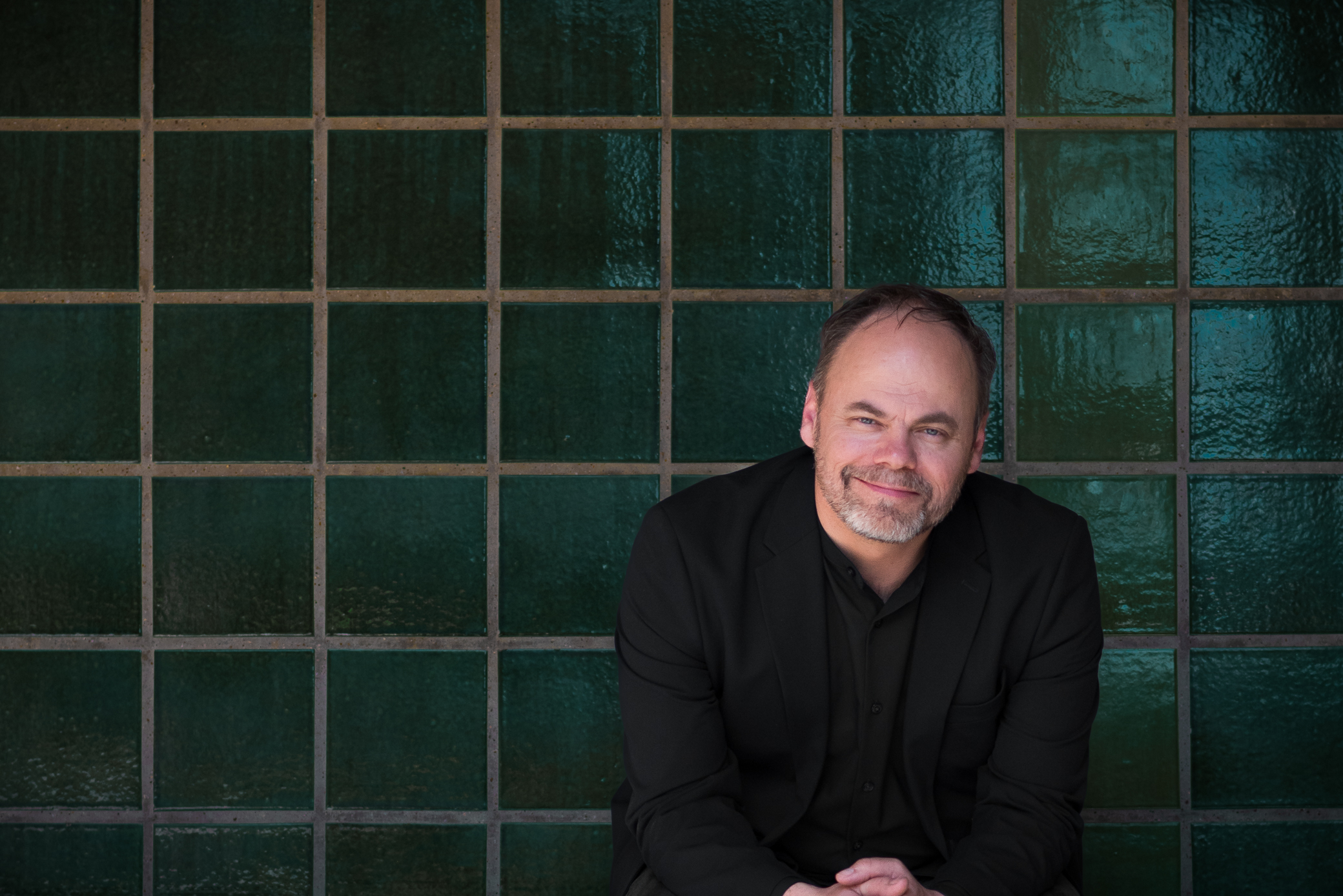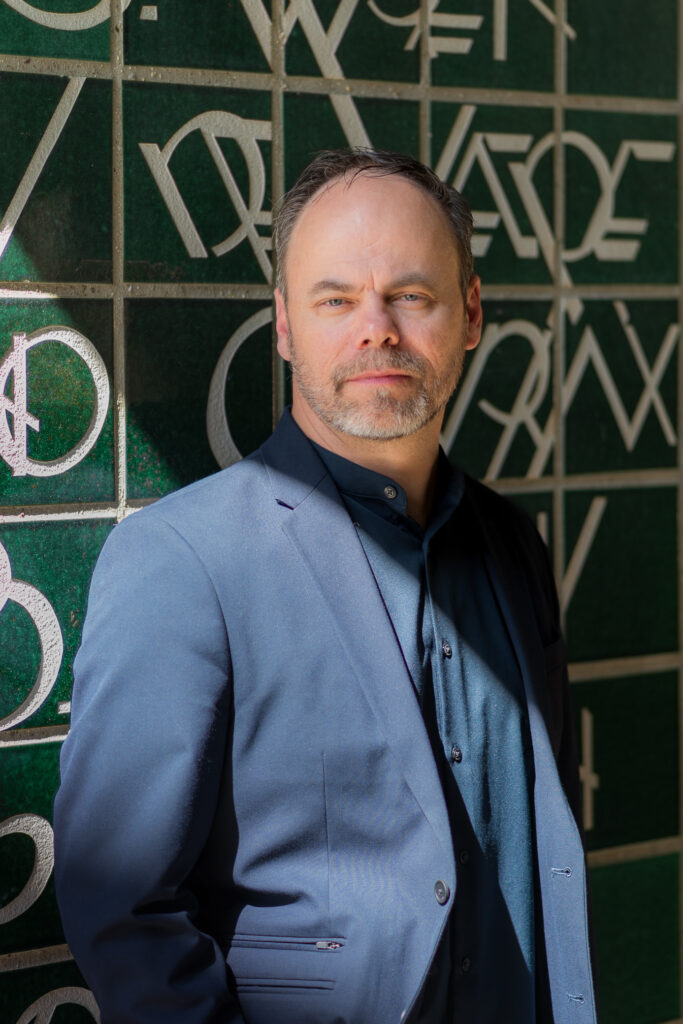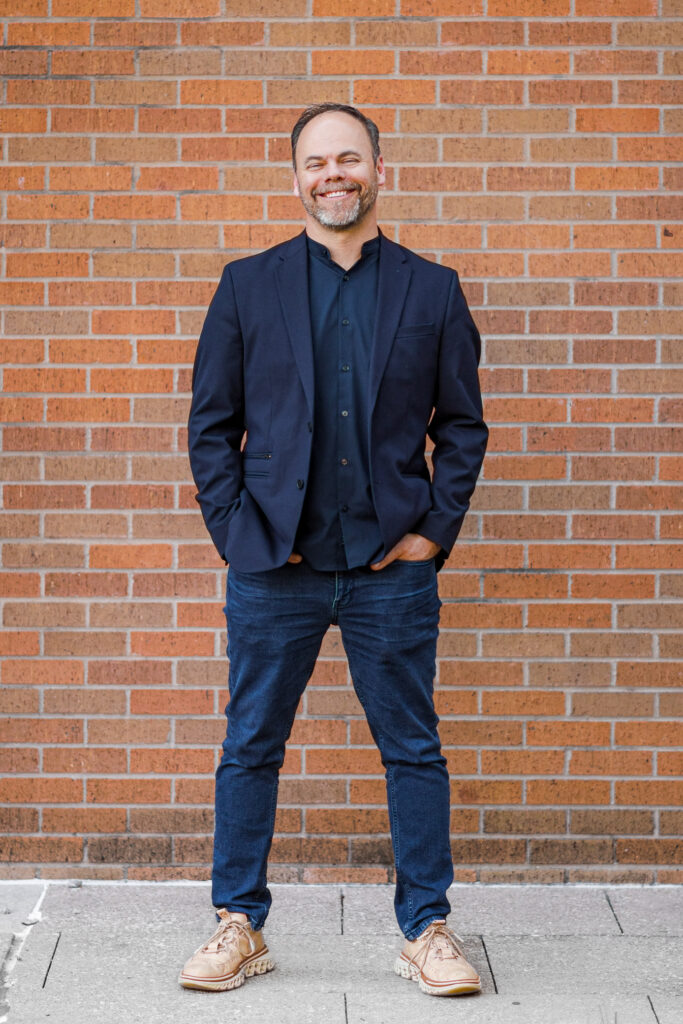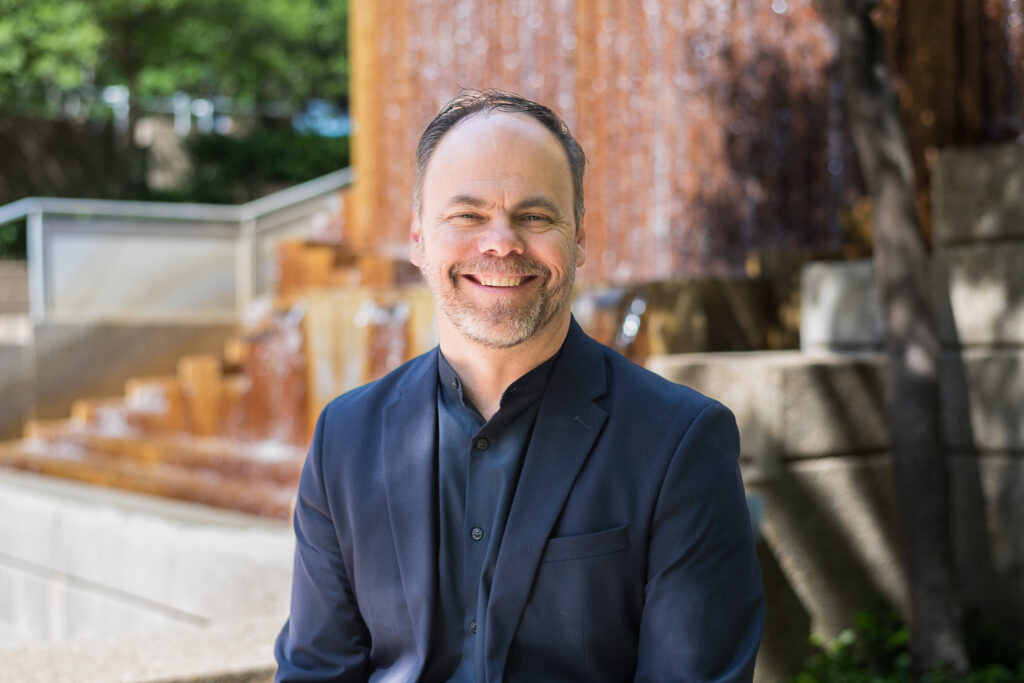Josh Nason
 Josh Nason at The University of Texas at Arlington campus // Photo by Conleigh Bauer
Josh Nason at The University of Texas at Arlington campus // Photo by Conleigh Bauer
Professor Joshua M. Nason is the dean of Hammons School of Architecture at Drury University and director of Iterative Studio, a collaborative design practice. Previously, he was assistant director for the School of Architecture at University of Texas at Arlington (UTA) where he taught for twelve years, following three years at Texas Tech University.
For Nason, teaching is cultivating a series of experiences that help students realize their authentic potential to impact the build world. As an educator, he emphasizes quality instruction and curricular innovation to imbue students with skills and confidence to advance architecture. Nason works across mediums, including writing, drawing, and building, all of which he considers acts of architecture that mediate between people and places.
Nason has participated on the Ken Roberts Delineation Competition (KRob) Committee for nine years and is a frequent moderator of the KRob Celebration event.
How does your involvement in community organizations relate to the larger architectural community?
My relationship with the architecture community is person by person. It’s an honor to connect with current students, alumni, past classmates, friends, and even just people that I’ve met. As people move on, we stay connected. These relationships have blossomed into my involvement in projects and other little things. I try to approach everything I do with optimism, positive energy, and excitement, and my involvement in these little things add up to be something great.
One of your longest engagements is the Ken Roberts Delineation Competition (KRob). What was your first exposure to this competition?
Nine years ago, Eduardo Castañeda called me and asked, will you do this? He was a recent graduate, a student of the first class that I taught at UTA, and the chair of the Krob Committee. He asked if I would moderate the jury discussion. I had only been at UTA a handful of years. I was completely humbled to be considered and jumped in. I absolutely fell in love with it. I think I’ve been the moderator seven of the last nine years. I enjoy seeing the work and talking to the jurors, the committee, and to the people that enter their work. It’s such a joy.

How has your involvement evolved?
I love being the moderator. Every year we have this meeting where the committee gathers around and asks who’s going to moderate? I sit there with my fingers crossed hoping that they’ll ask me.
It’s been a special year because we are celebrating the 50th year of KRob. The competition predates almost all of us. We talked about a commemorative book for several years but struggled to figure out the right way to approach it. Ricardo Leon brought the book idea back up last year, and the committee was determined to make it happen. After I was asked to edit KRob at 50, I immediately reached out to as many good people as I could for the project. We have close to 15 people working on the book in different capacities. We are aiming to present all the annual finalists whose physical work we have archived, accompanied by essays on drawing, and the competition’s history.
I’m also releasing a podcast on drawing called Drawing Conclusions with Joshua Nason, which KRob has been very generous in sponsoring. The podcast will break down the specific roles that drawing plays in architecture and outside of architecture and why we think drawing is important.
I want to talk about drawing. It’s a crucial time that we talk about the mediums of architecture, as the mediums change, and the profession starts to evolve. I think we must understand not only our product, but the value of what we do and how we contribute to the world, the professional community, cities, and social structures. What is the voice of the architect? Part of that is talking about drawing.
KRob is the longest running drawing competition in the world. That is an incredible feat for this competition to be maintained for 50 years.
KRob turning 50 years old is monumental. For anything to become 50, it has to have a core strength that helps it persist. It is interesting to think about everything that has changed in the last 50 years in architectural delineation, from hand drawing to early computer drawing to modern computer drawing. Now we’re talking about virtual reality (VR) and artificial intelligence (AI) removing people from the drawing process entirely. Drawing has changed, and the competition has evolved. We’ve had moments where KRob has had 3D prints submitted. We’ve had paintings submitted. We’ve had films and animations submitted.
Now, we have AI submittals, and some of these entries have been incredibly controversial. We argue as a committee about what should be included, how it should be included, and why these entries are important. As drawing competitions include or dis-include mediums, they’re staking a claim on the future of architecture. While we must approach that carefully, we also need to be inclusive and optimistic. We have to be experimental. You can draw with ink or with pen or with a mouse or with basswood or concrete. It’s about exploring ideas and telling the story of these projects.
What goals do you have for the 50th anniversary?
One goal is to pay honor and respect for 50 years of tremendous work. If you look at the entries over that time, you will find work in any medium and style that you can imagine. What permeates through each of these entries is the quality of craft, of idea, and of experimentation. We must take these monumental moments, pause, and enjoy what we have done as a profession.
I also want to look forward to the next 50 years of this competition, not only in Dallas-Fort Worth, but beyond. Another goal is to add emphasis on what this competition is and continue to widen its impact. Every year we get hundreds of entries from across the globe, but we want to impact more.
My goal as a designer is to bring quality into the world. This book is so exciting because I get to be part of getting this amazing work out there. A lot of people have not seen this work, so we want to disseminate this book as widely as we can.

One thing that sets KRob apart from other competitions is that the work doesn’t have a strict design submission goal. It is purely looking at communicating “What does it all mean to you?”
If you think about when the competition began in 1974, that’s early postmodernism. One thing that starts to happen in that period is the emphasis on the drawings. Drawings weren’t just a vehicle to deliver a building, but the drawings were designed elements themselves. KRob began on the cusp of the drawing becoming an architectural deliverable at a gallery level.
Even today, drawings inform how to make a building, but they’ve also got our fingerprints all over it. They say something about us as architects. We challenge ideas. We put things forward. We try new mediums. That really is in line with KRob and other drawing competitions that have emerged over the last 50 years.
What advice would you give to individuals that want to be more involved in this industry?
Find avenues outside of your work that give you fulfillment and widen your impact. Reach out to your local AIA chapter and ask what you can be involved in. There are a lot of things you can do from mentoring younger architects and students to being on a committee or putting together fundraising. Try to find some alignment with what you’re interested in. Chapters need your help.
Outside of the chapter, there might be something at your firm or in your community. Something I tell my students – just by walking on to a college campus, they become one of the most educated people on the planet. If we’re talking to a group of prospective and licensed architects, we are talking to some of the most trained, educated, and talented people on earth. That training, intelligence, and talent can make a huge difference in professional circles and local communities. If you are interested in the political side of architecture, engage. If you’re interested in the environment or social issues, volunteer.
It also benefits firms to explore these endeavors. There’s a rising generation of architects that will not just sit at a computer and do what they’re told. They want projects that make a difference. They want to ensure that their work is not hurting the environment. They want to ensure that they are working towards justice for all people.
When it’s all said and done, what do you want your legacy to be within the architectural community? What impact do you want to have?
To me, my legacy is what I want to be remembered for. I would like to be remembered as a person that cared about the people in my life, and as somebody who contributed significantly to projects that made a positive impact on things of significance.
Above all else, I want my family – Tia, Dallin, Carter, and MJ – to know that I love them. I want to be remembered as somebody who was devoted to my family and as someone connected to the people around me, and that together, all of us delivered some things of quality into the world that can make a positive difference.
Interview conducted by Ryan Playle, Associate AIA. Edited for brevity and clarity by Madalyn Melton.

Learn more about the Ken Roberts Delineation Competition at https://www.krobarch.com.